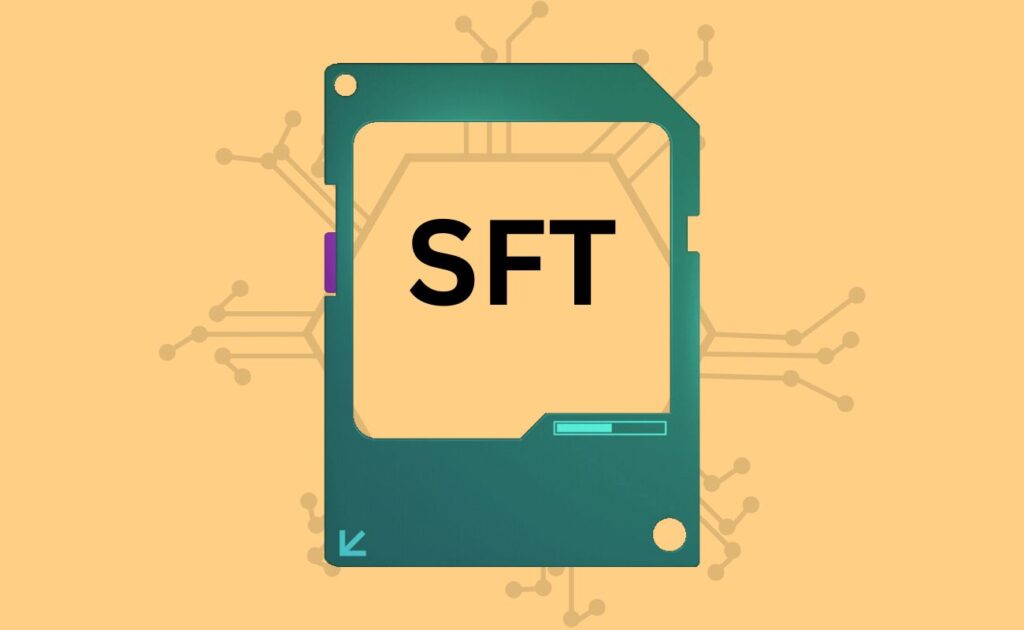In the rapidly evolving world of blockchain technology, digital assets like NFTs (Non-Fungible Tokens) and SFTs (Semi-Fungible Tokens) are gaining significant attention. These assets represent ownership and value in the digital realm, but they serve different purposes and have unique characteristics.
Understanding the differences between NFTs and SFTs is crucial for anyone interested in blockchain, cryptocurrency, or digital collectibles. This article will explain what NFTs and SFTs are, their key differences, and their advantages and disadvantages.
Understanding NFTs (Non-Fungible Tokens)

NFTs, or Non-Fungible Tokens, are digital assets that represent ownership of a unique item or piece of content. The term “non-fungible” means that each token is one-of-a-kind and cannot be replaced with something else. Unlike cryptocurrencies such as Bitcoin or Ethereum, where each coin is identical and interchangeable, NFTs are unique and cannot be duplicated.
Characteristics of NFTs
- Uniqueness: NFTs are unique, meaning no two NFTs are the same. Each token is associated with a specific digital asset, such as an artwork, video, or piece of music, and this uniqueness is recorded on the blockchain.
- Indivisibility: NFTs cannot be divided into smaller parts like cryptocurrencies can. You either own the whole NFT or none of it.
- Ownership and Provenance: NFTs provide proof of ownership and origin. The blockchain records the ownership history, ensuring that the creator and current owner are known.
Common Uses of NFTs
NFTs have become popular in various industries:
- Digital Art and Collectibles: Artists create digital art as NFTs, allowing buyers to own a unique piece of art. Digital collectibles, such as virtual trading cards, are also sold as NFTs.
- Virtual Real Estate: NFTs are used to buy and sell virtual land in online worlds, such as Decentraland or The Sandbox.
- Gaming Assets: In-game items, such as weapons or skins, are sold as NFTs, allowing players to truly own and trade their virtual assets.
Understanding SFTs (Semi-Fungible Tokens)

SFTs, or Semi-Fungible Tokens, are a newer concept in the blockchain world. Unlike NFTs, SFTs are partially fungible, meaning they can start as identical assets and later become unique.
Characteristics of SFTs
- Hybrid Nature: SFTs begin as fungible tokens, meaning they are interchangeable and can be grouped. However, after certain conditions are met, they can transform into non-fungible tokens, becoming unique.
- Transferability and Divisibility: SFTs can be transferred and divided like fungible tokens, but once they become unique, they share the indivisibility characteristic of NFTs.
- Use Cases for SFTs: SFTs are versatile and can be used in scenarios where assets initially need to be identical but later require unique properties.
Common Uses of SFTs
SFTs are gaining traction in several areas:
- Gaming Items: In games, players may start with identical items that later evolve into unique ones based on their usage or upgrades.
- Event Tickets: Tickets for events can be sold as SFTs, where each ticket is initially identical. After the event, the tickets can become unique collectibles.
- Loyalty Rewards: Companies can issue loyalty points as SFTs, which start as identical but become unique based on how they are redeemed or used.
Key Differences Between NFTs and SFTs

While both NFTs and SFTs are digital assets on the blockchain, they differ in several key ways:
Fungibility vs. Semi-Fungibility
The most significant difference between NFTs and SFTs is their fungibility. NFTs are entirely non-fungible, meaning each token is unique. SFTs, on the other hand, are semi-fungible. They start as fungible tokens, interchangeable with others, but can later become unique, non-fungible tokens.
Use Cases and Market Adoption
NFTs and SFTs are used in different markets, although they sometimes overlap. NFTs have found a strong market in digital art, collectibles, and virtual real estate. SFTs, however, are more flexible and are used in scenarios where assets need to be both fungible and non-fungible, such as in gaming or event ticketing.
Technological Implementation
NFTs and SFTs are built on different blockchain standards. NFTs are typically created using the ERC-721 standard on the Ethereum blockchain, which ensures their uniqueness. SFTs are created using the ERC-1155 standard, which allows for both fungible and non-fungible tokens in a single contract. This makes SFTs more scalable and versatile than NFTs.
Advantages and Disadvantages

Both NFTs and SFTs have their own advantages and disadvantages:
NFTs
- Advantages:
- Unique Ownership: NFTs offer a way to own a unique piece of digital content.
- Rarity: The scarcity of NFTs can increase their value.
- Artistic Value: NFTs have opened new opportunities for artists to monetize their work.
- Disadvantages:
- Limited Use Cases: NFTs are primarily used in digital art and collectibles, limiting their broader adoption.
- Market Volatility: The value of NFTs can fluctuate wildly, making them a risky investment.
SFTs
- Advantages:
- Flexibility: SFTs can be used in various applications where both fungibility and non-fungibility are needed.
- Wider Applications: SFTs have broader use cases, from gaming to loyalty programs.
- Ease of Transfer: SFTs can be easily transferred and divided before they become unique.
- Disadvantages:
- Less Recognition: SFTs are less well-known than NFTs, which may limit their adoption.
- Complexity: The dual nature of SFTs can be confusing and may require more understanding to use effectively.
Future Trends and Potential Developments

The future of NFTs and SFTs looks promising, with both types of tokens expected to grow in popularity:
Growth in Adoption of NFTs and SFTs
As blockchain technology becomes more mainstream, the adoption of both NFTs and SFTs is expected to increase. More industries may find innovative ways to use these tokens, expanding their applications.
Emerging Markets and Industries for NFTs and SFTs
New markets are emerging for NFTs and SFTs, including virtual reality, music, and entertainment. As these tokens gain traction, they may become integral to these industries.
Potential for Innovation in Hybrid Assets
SFTs represent an exciting area for innovation, as they combine the best of both worlds: fungibility and non-fungibility. This hybrid nature could lead to the creation of new types of digital assets that are more adaptable and versatile.
Conclusion
In conclusion, NFTs and SFTs are both vital components of the digital asset ecosystem, but they serve different purposes. NFTs are unique and non-fungible, making them ideal for digital art and collectibles. SFTs, with their hybrid nature, offer more flexibility and can be used in a wider range of applications.
Understanding these differences is crucial for anyone interested in the future of digital assets and blockchain technology. As these technologies continue to evolve, NFTs and SFTs will likely play an increasingly important role in how we buy, sell, and own digital content.






GIPHY App Key not set. Please check settings